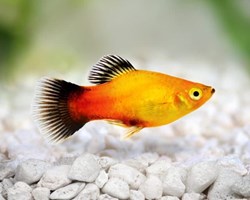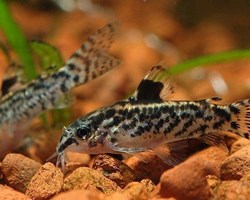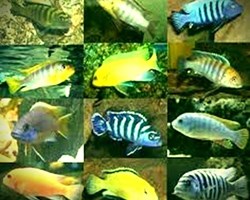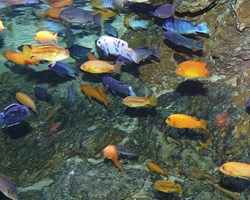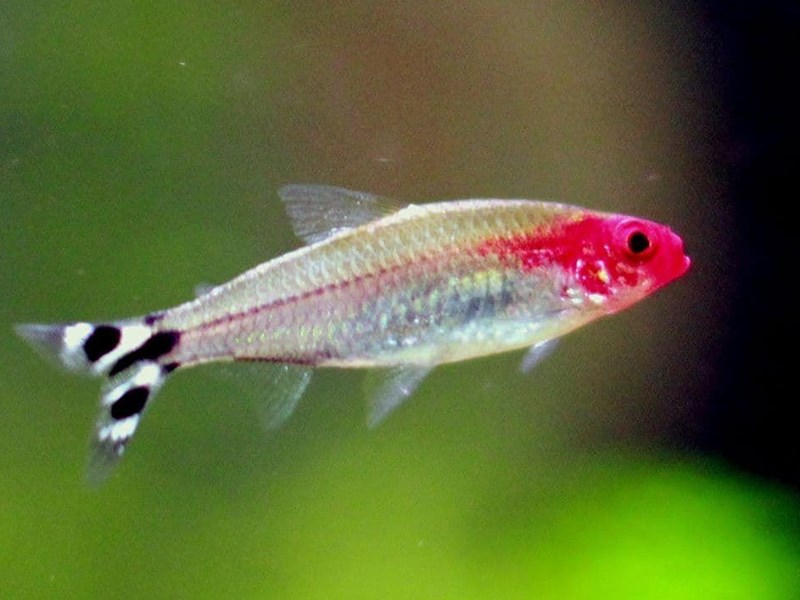
The drunk fish gets its name from having a very striking red head, making it look like it has a “red nose”. This species is very common in the hobby due to its easy maintenance and reproduction.
Common name: Drunk.
Scientific name:Hemigrammus rhodostomus .
Family: Characidae.
Temperature: 24 – 27ºC.
Maximum size: 5 cm.
PH: 5.5 – 7.0.
Kh: 2 – 4 dGh.
Gh: 2 – 10dGh.
Diet: Omnivorous.
Temperament: Peaceful and gregarious (8 to 10 individuals minimum).
Sexual dimorphism: The females have a slightly more rounded body while the males have a little more color.
Curiosities and observations: The Borrachitos are an easy species to maintain, colorful and peaceful, they are one of the favorites of many in part because of their easy reproduction, but if you try to reproduce them, you should know that 3 species of Borrachitos are normally commercialized, so you should try to identify them so as not to mix them up. Here is a visual guide for you to recognize them:
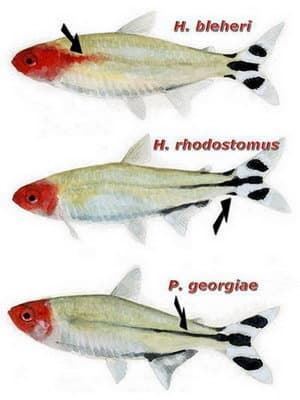
DESCRIPTION OF THE DRUNK FISH:
The drunken fish, Hemigrammus rhodostomus, is a tetra and as such, belongs to the Characin family.
Like most of the fish belonging to the Characin family, we are talking about a very calm fish, suitable for a community aquarium, where it can live with a wide variety of different species of fish.
In addition to Borrachito fish, it is known by other popular names, such as red-nosed tetra, red-headed tetra, red-snouted tetra or red tetra.
The Borrachito fish can reach five centimeters in length and like most Characins, it has an elongated shape.
No obvious sexual dimorphisms are detected, except that the females have a slightly rounder body than the males.
It is easy to differentiate the Borrachito fish (Hemigrammus rhodostomus) from the rest of the tetras, due to its original coloration.
The color of its body is quite typical, silver gray with slight shades between green and yellow, but its head is an intense red color (hence the nickname "Drunk"), which goes from the snout to the back of the eyes. .
The caudal fin is also quite striking, with horizontal black and white stripes, arranged perpendicular to the body.
Under certain circumstances, such as water that is too alkaline, they lose much of their color.
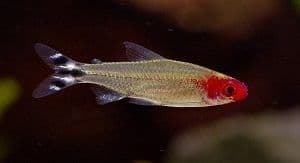
DISTRIBUTION AND HABITAT:
The Hemigrammus rhodostomus is native to the Orinoco River and the lower Amazon basin, between Venezuela and Brazil.
It is usually found in blackwater rivers, named for the high concentration of decomposing organic material. As a consequence, we are facing very acidic waters.
They live in calm waters, with few or no movements.
AQUARIUM CARE FOR THE DRUNK FISH:
To reproduce the original biotope of the Borrachito fish, an aquarium of 70 liters will suffice. The water temperature should be maintained between 24º and 27ºC, with a pH of 5.5 to 7.
The bottom of the aquarium should consist of a river sand substrate, to which we will add branches or pieces of driftwood, even dry leaves.
You can also add some peat, although it is recommended to keep it inside a net bag, as if we were making an infusion.
The idea is to generate that sewage environment, with a large amount of decomposing material, from which they come.
Usually, in the area where these fish live, they do not usually have aquatic plants, so it would not be necessary to add any type of plant, unless they are part of the community aquarium.
This means that they admit different environments, although depending on the conditions of the aquarium, we can observe that the coloration is more or less intense.
Partial water changes are recommended every week.
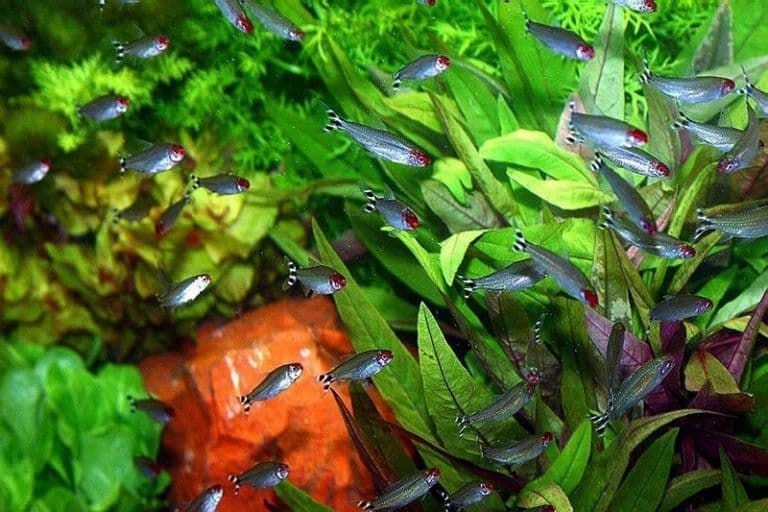
DRUNK FISH NUTRITION:
They are omnivorous fish, they will accept almost any food that we offer them, although to maintain a better coloration, it is a good idea to provide them with a varied diet.
Live and frozen food can be offered, as well as good quality dry food.
The important thing is to keep in mind that they are small fish, and with a small mouth, the size of the food has to be the right size.
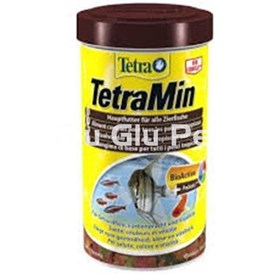
DRUNK FISH COMPATIBILITY:
Drunken Tetra compatible fish:
- Otocinclus.
- Harlequin.
- Cherry Barbel.
- Kribensis cichlid.
- Borara fish.
- Ramirezi.
- Molly.
- Ancistrus.
- Pearl Gourami.
- Platy.
- Guppy Endler.
- Apple Snail.
- Zebra fish.
- Tetra Neon.
- Guppies.
- Nun.
- Ax Fish.
- Corydora.
- Rasbora Galaxy.
- Chinese neon.
- Tiger Barb.
- female betta.
- Tetra Cardinal.
REPRODUCTION OF THE DRUNK FISH:
The reproduction of Borrachito fish is possible, following the usual guidelines for other species of Characins:
- Ideally, we need a breeding tank, which should be dimly lit and with fine-leaved plants, where the fish will lay their eggs.
- The base should be covered with some type of mesh, which prevents the adults from reaching the eggs that fall to the bottom, to prevent them from being eaten.
- The water must be acidic, with a pH between 5.5 and 6.5, with a temperature in the high range of the usual, above 27ºC.
- We will be at the right time, when the females are slightly more rounded and the males show more intense colors.
- In the early stages of their life, the fry are very sensitive to light. The aquarium should be kept as dark as possible.
- The eggs hatch between 24 and 36 hours after laying.
- The fry swim 3 or 4 days later.
- In the first days, they have to be fed with infusoria, suitable food for fingerlings.
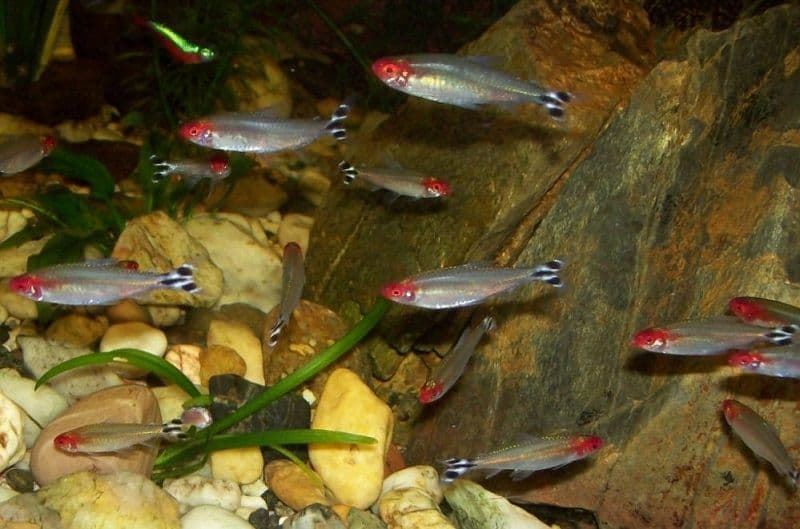
Other articles that may interest you:
- Diseases of the Drunken Fish.
- Varieties of the Pez Borrachito.
- The Lemon Tetra is one of the most beautiful fish for a community aquarium.
- Chinese neon or White Cloud Mountain fish, named for its place of origin in southern China.
- Black neon tetra.
- Neon Tetra or Neon Innesi, is a warm and fresh water fish.
- Aquarium maintenance.
- What do you need to have your first aquarium.
- The best tropical freshwater fish recommended for beginners.
- The best aquarium plants for beginners that you should know.
- The best plants for cold water aquariums.
- The best groundcover plants for your aquarium.
- The best substrates for a planted aquarium.
- Aquascaping for beginners.

